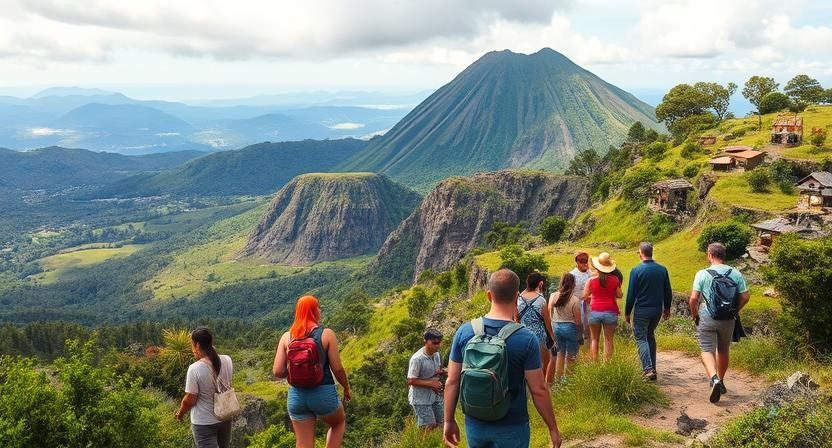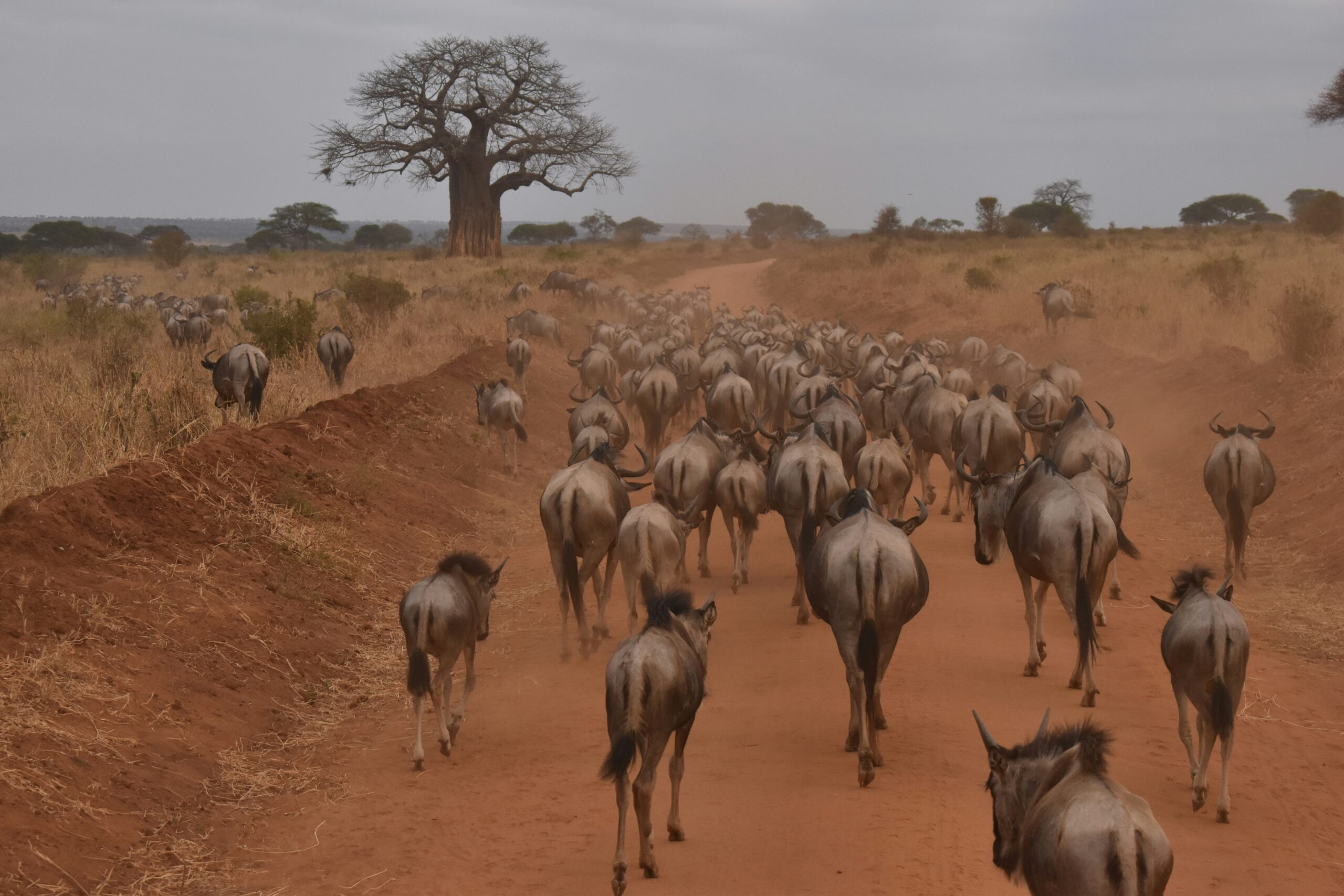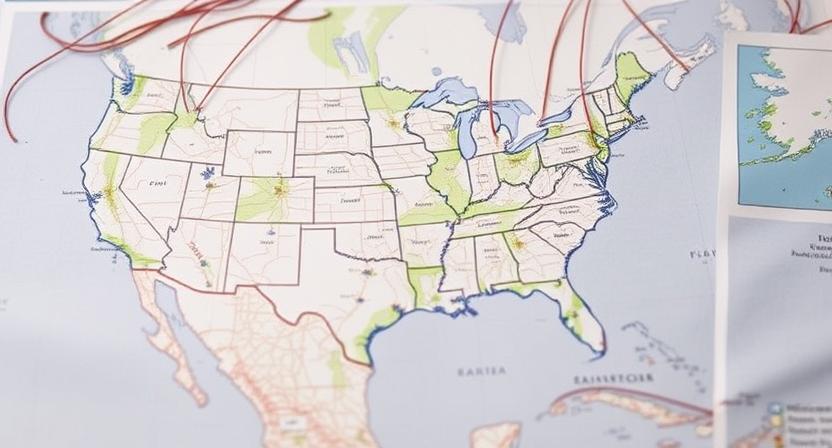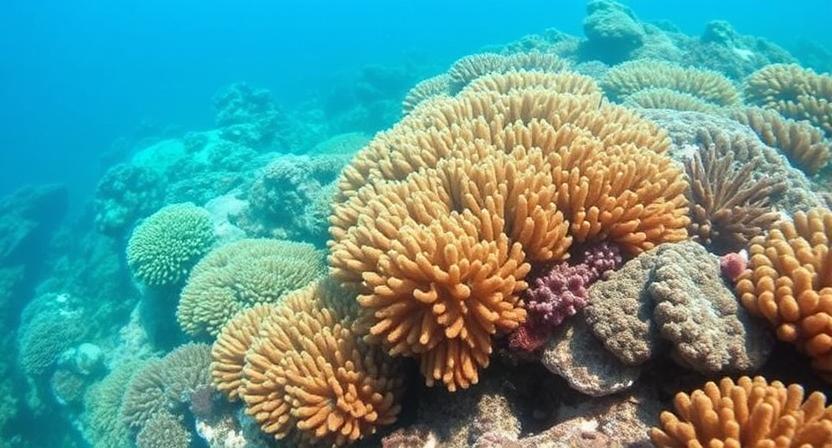
Grand Canyon

Carved by the mighty Colorado River over millions of years, the Grand Canyon is a breathtaking natural wonder located in the state of Arizona, USA. Spanning over 270 miles in length and reaching depths of over a mile, the canyon’s majestic red and orange-hued walls stand as a testament to the forces of nature and time.
Visitors to the Grand Canyon are treated to awe-inspiring panoramic views, with each overlook offering a new perspective on the vastness and beauty of this geological marvel. Whether hiking along its rim, rafting down the river below, or simply gazing out at the seemingly endless expanse of rock and sky, the Grand Canyon never fails to leave a lasting impression on all who have the privilege of beholding its grandeur.
• The Grand Canyon is considered one of the Seven Natural Wonders of the World
• Over 6 million people visit the Grand Canyon National Park each year
• The South Rim is the most visited part of the canyon, offering stunning views and numerous visitor facilities
• The North Rim is less crowded but offers equally breathtaking vistas for those willing to make the journey
Great Barrier Reef
Stretching over 1,400 miles off the coast of Australia, the Great Barrier Reef is renowned as the largest coral reef system in the world. Its vivid array of colors and diverse marine life make it a top destination for snorkelers and scuba divers from around the globe. The reef is home to over 1,500 species of fish, 411 types of hard coral, and countless other creatures like sea turtles, sharks, and dolphins.
The Great Barrier Reef faces numerous threats, including climate change, pollution, and overfishing. Coral bleaching, caused by rising ocean temperatures, poses a particularly serious risk to this delicate ecosystem. Efforts are being made to protect and preserve the reef, such as the implementation of marine protected areas and sustainable tourism practices. The future of the Great Barrier Reef hangs in the balance, underscoring the urgent need for global action to combat climate change and protect our oceans.
• The Great Barrier Reef is home to over 1,500 species of fish
• It also houses 411 types of hard coral
• Other marine creatures found in the reef include sea turtles, sharks, and dolphins
• Climate change, pollution, and overfishing are major threats to the reef
• Coral bleaching, caused by rising ocean temperatures, poses a serious risk
• Efforts such as marine protected areas and sustainable tourism practices are being implemented to protect the reef
• Global action is needed to combat climate change and preserve our oceans for future generations.
Mount Everest
Mount Everest is the highest mountain in the world, standing tall at an impressive elevation of 29,032 feet. Located in the Himalayas, this majestic peak attracts climbers and adventurers from around the globe, eager to conquer its challenging slopes. The awe-inspiring beauty and sheer magnitude of Mount Everest make it a symbol of human determination and endurance.
The treacherous ascent to the summit of Mount Everest is a feat that requires careful planning, physical fitness, and mental resilience. Despite the risks and unpredictable weather conditions, the allure of reaching the top draws countless individuals seeking to test their limits and achieve a remarkable accomplishment. The mountain’s towering presence against the backdrop of the Himalayan range serves as a stark reminder of both nature’s raw power and humanity’s unwavering spirit of exploration.
• Mount Everest is the highest mountain in the world, standing at an elevation of 29,032 feet
• Located in the Himalayas, it attracts climbers and adventurers from around the globe
• The treacherous ascent to the summit requires careful planning, physical fitness, and mental resilience
• Despite risks and unpredictable weather conditions, many seek to conquer its challenging slopes
• The sheer magnitude of Mount Everest symbolizes human determination and endurance
Aurora Borealis
The Aurora Borealis, also known as the Northern Lights, is a stunning natural light display that graces the skies of the polar regions. This mesmerizing phenomenon occurs when charged particles from the sun collide with the Earth’s atmosphere, creating colorful displays of light that dance across the night sky.
The vibrant hues of green, pink, purple, and blue that paint the darkness of the night create an awe-inspiring spectacle for those lucky enough to witness it. From ancient folklore to modern scientific explanations, the Aurora Borealis continues to captivate and inspire all who have the opportunity to experience its breathtaking beauty firsthand.
• The Aurora Borealis is primarily seen in high-latitude regions such as Alaska, Canada, Scandinavia, and Russia.
• The best time to view the Northern Lights is during the winter months when nights are longer and darker.
• Solar activity plays a significant role in the intensity and frequency of Aurora Borealis displays.
• Different colors of the Northern Lights are caused by varying gases in the Earth’s atmosphere interacting with solar particles.
Victoria Falls

Victoria Falls is one of the most breathtaking natural wonders in the world. The sheer power and majestic beauty of the cascading waters leave visitors in awe as they stand in the presence of this magnificent spectacle. The deafening roar of the falls and the mist rising into the air create a sensory experience like no other.
The surrounding rainforest and national parks offer a chance for visitors to witness the diverse wildlife that calls this region home. From playful monkeys swinging through the trees to graceful elephants roaming the plains, the ecosystem around Victoria Falls is teeming with life. Exploring the area, visitors can truly appreciate the harmony between nature and the awe-inspiring power of Victoria Falls.
• Visitors can take a helicopter or microlight flight over the falls for a bird’s eye view of this natural wonder.
• White-water rafting on the Zambezi River below the falls is an exhilarating experience for adventure seekers.
• The Devil’s Pool, a natural rock pool at the edge of Victoria Falls, offers daring visitors a chance to swim right up to the edge of the cascading waters.
• Sunset cruises on the Zambezi River provide stunning views of Victoria Falls as the sun dips below the horizon.
Paricutin Volcano
Paricutin Volcano formed unexpectedly in 1943 in a Mexican cornfield, marking a unique instance of a volcano’s birth being witnessed and recorded by people. The eruption took place over the span of nine years, creating a cone that reached 1,391 feet in height. The surrounding villages were buried in lava and ash, forever altering the landscape.
The volcanic activity of Paricutin has since ceased, leaving behind a stark and surreal reminder of nature’s raw power. Tourists and geologists alike flock to this site to witness firsthand the dynamic process of volcanic formation and the lasting impact it can have on the environment and local communities.
• Paricutin Volcano formed unexpectedly in 1943 in a Mexican cornfield
• The eruption took place over nine years, creating a cone that reached 1,391 feet in height
• Surrounding villages were buried in lava and ash, forever altering the landscape
• The volcanic activity of Paricutin has since ceased
• Tourists and geologists flock to this site to witness firsthand the dynamic process of volcanic formation
Galapagos Islands
Located in the Pacific Ocean, the Galapagos Islands are renowned for their incredible biodiversity and unique wildlife species. The islands, of which there are 18 main ones, are a UNESCO World Heritage site and a popular destination for nature enthusiasts and eco-tourists alike. Charles Darwin’s visit to the Galapagos in the 19th century played a crucial role in the development of his theory of evolution by natural selection, and visitors to the islands can still witness the diverse array of species that inspired his groundbreaking work.
From giant tortoises to marine iguanas to blue-footed boobies, the Galapagos Islands offer a captivating glimpse into the natural world like no other place on Earth. The remote location of the islands has allowed for the evolution of unique creatures found nowhere else, making it a must-visit destination for those interested in biology, ecology, and conservation. Snorkeling with sea lions, witnessing volcanic landscapes, and exploring pristine beaches are just some of the experiences that await travelers to this extraordinary archipelago.
• The Galapagos Islands are home to 18 main islands
• UNESCO World Heritage site
• Popular destination for nature enthusiasts and eco-tourists
• Charles Darwin’s visit influenced his theory of evolution by natural selection
The diverse wildlife on the Galapagos Islands includes giant tortoises, marine iguanas, and blue-footed boobies. These unique species offer a rare opportunity to witness evolution in action and learn about the interconnectedness of all living things. Snorkeling with sea lions, exploring volcanic landscapes, and relaxing on pristine beaches are just a few of the activities that visitors can enjoy during their time on these enchanting islands.
Whether you’re interested in biology, ecology, or conservation, the Galapagos Islands have something to offer every curious traveler. With strict regulations in place to protect the fragile ecosystem, visitors can rest assured that their impact on this delicate environment is minimized. By supporting sustainable tourism practices and respecting the natural beauty of the islands, travelers can help ensure that future generations will be able to experience the wonders of the Galapagos for years to come.
Amazon Rainforest
The Amazon Rainforest is the largest tropical rainforest in the world, spanning across multiple countries in South America. Its sheer size and biodiversity make it a critical part of the Earth’s ecosystem, providing a habitat for numerous plant and animal species. The lush vegetation and dense canopy create a unique environment that supports a wide array of life, from colorful birds to elusive big cats.
This vast expanse of greenery plays a crucial role in regulating the planet’s climate by absorbing carbon dioxide and releasing oxygen through the process of photosynthesis. The Amazon River, flowing through the heart of the rainforest, is one of the longest rivers in the world and serves as a lifeline for many communities that call this region home. Despite facing threats from deforestation and climate change, the Amazon Rainforest remains a symbol of natural beauty and a treasure trove of ecological wonders.
• The Amazon Rainforest is home to approximately 10% of the world’s known species
• Indigenous tribes have lived in the Amazon for thousands of years, relying on its resources for survival
• Deforestation in the Amazon has increased dramatically in recent years due to logging, agriculture, and mining
• The loss of biodiversity in the Amazon Rainforest could have far-reaching consequences for global ecosystems
Antarctica

Antarctica is the coldest, windiest, and driest continent on Earth. It contains about 70% of the planet’s fresh water in the form of ice. Despite its harsh conditions, Antarctica is home to diverse species of wildlife, including penguins, seals, and whales.
The Antarctic Ice Sheet, which covers the continent, is the largest single mass of ice on Earth. It plays a vital role in regulating the global climate and sea levels. The vast, untouched landscapes of Antarctica offer scientists valuable insights into the Earth’s past and its changing climate.
• Antarctica is the coldest, windiest, and driest continent on Earth
• It contains about 70% of the planet’s fresh water in the form of ice
• Home to diverse species of wildlife such as penguins, seals, and whales
• The Antarctic Ice Sheet is the largest single mass of ice on Earth
• Plays a vital role in regulating global climate and sea levels
• Offers scientists valuable insights into Earth’s past and changing climate
Yellowstone National Park
Yellowstone National Park is a vast expanse of natural beauty, spanning over 2.2 million acres in the states of Wyoming, Montana, and Idaho. It is renowned for its geothermal features, including Old Faithful geyser which erupts at regular intervals, captivating visitors with its towering streams of water and steam.
The park is also a sanctuary for a diverse range of wildlife, such as bears, wolves, elk, and bison, thriving in the vast wilderness of Yellowstone. Visitors can witness these majestic creatures in their natural habitat, reminding us of the importance of conservation efforts to protect these magnificent species for future generations to appreciate.
• Yellowstone National Park covers over 2.2 million acres across three states
• Old Faithful geyser is a popular attraction, erupting at regular intervals
• The park is home to a variety of wildlife including bears, wolves, elk, and bison
• Visitors can observe these animals in their natural habitat
• Conservation efforts are crucial to protect the diverse species within the park
Niagara Falls
Niagara Falls is a breathtaking natural wonder located on the border between the United States and Canada. It consists of three separate waterfalls – the Horseshoe Falls, the American Falls, and the Bridal Veil Falls. The Falls are renowned for their powerful flow of water, creating a stunning display of mist and rainbows that captivate visitors from around the world.
The sheer force and beauty of Niagara Falls have made it a popular tourist destination for centuries, drawing millions of visitors each year. Whether viewed from the observation decks on either side of the border, or from the decks of a boat journeying into the mist of the Falls themselves, the sight and sound of the rushing water cascading over the cliffs is a truly awe-inspiring experience.
• Niagara Falls is a breathtaking natural wonder located on the border between the United States and Canada.
• It consists of three separate waterfalls – the Horseshoe Falls, the American Falls, and the Bridal Veil Falls.
• The Falls are renowned for their powerful flow of water, creating a stunning display of mist and rainbows that captivate visitors from around the world.
The sheer force and beauty of Niagara Falls have made it a popular tourist destination for centuries, drawing millions of visitors each year. Whether viewed from the observation decks on either side of the border, or from the decks of a boat journeying into the mist of the Falls themselves, the sight and sound of rushing water cascading over cliffs is truly awe-inspiring.
Sahara Desert
Stretching across North Africa, the Sahara Desert is the largest hot desert in the world. It covers an expansive area of approximately 3.6 million square miles, making it almost as large as the entire United States. The landscape of the Sahara is dominated by vast stretches of sand dunes, rocky plateaus, and arid valleys, creating a harsh and unforgiving environment that receives minimal rainfall each year.
Despite its challenging conditions, the Sahara Desert is home to a surprisingly diverse range of plant and animal species specially adapted to survive in this extreme environment. From the iconic dromedary camels to the elusive fennec foxes, a variety of creatures call the desert their home. In addition to its unique ecosystems, the Sahara is also rich in cultural heritage, with ancient caravan routes, historic oases, and traditional Berber settlements scattered throughout the region.
• The Sahara Desert is the largest hot desert in the world, spanning approximately 3.6 million square miles
• The landscape of the Sahara is characterized by sand dunes, rocky plateaus, and arid valleys
• Despite minimal rainfall, the desert is home to a diverse range of plant and animal species adapted to survive in harsh conditions
• Iconic creatures such as dromedary camels and fennec foxes can be found in the Sahara Desert
• The region also boasts rich cultural heritage with ancient caravan routes, historic oases, and traditional Berber settlements scattered throughout
Iguazu Falls

Iguazu Falls, located on the border of Brazil and Argentina, is a breathtaking natural wonder that never fails to leave visitors in awe. The sheer size and power of the falls, comprised of around 275 individual cascades, illustrate the incredible force of nature that has been shaping the landscape for centuries. The surrounding lush greenery and diverse wildlife only add to the majestic beauty of this UNESCO World Heritage Site.
Tourists from around the world flock to Iguazu Falls to witness its grandeur firsthand, often taking boat rides to get up close to the thundering water or hiking along the well-maintained trails to admire the falls from various viewpoints. The mist rising from the churning waters creates a mystical atmosphere, enhancing the overall experience of being in the presence of such a magnificent natural spectacle. For those seeking a truly unforgettable encounter with the power of nature, Iguazu Falls is a must-visit destination.
• The sheer size and power of the falls, comprised of around 275 individual cascades, illustrate the incredible force of nature
• The surrounding lush greenery and diverse wildlife only add to the majestic beauty of this UNESCO World Heritage Site
• Tourists often take boat rides to get up close to the thundering water or hike along well-maintained trails for different viewpoints
• The mist rising from the churning waters creates a mystical atmosphere, enhancing the overall experience
• Iguazu Falls is a must-visit destination for those seeking an unforgettable encounter with nature
The Dead Sea
Located at the lowest point on Earth, the Dead Sea is a unique natural wonder that straddles the borders of Jordan and Israel. Its high salt concentration prevents aquatic life from flourishing, hence the name “Dead Sea.” The mineral-rich mud found along its shores is believed to have therapeutic properties, drawing visitors from around the world seeking relief for various skin conditions and ailments.
The Dead Sea’s famously buoyant waters provide a once-in-a-lifetime floating experience, allowing swimmers to effortlessly glide on its surface. The surreal landscape surrounding the sea adds to its mystique, making it a must-visit destination for those seeking relaxation and rejuvenation in a setting unlike any other.
• The Dead Sea is known for its high salt concentration, preventing aquatic life from thriving
• The mineral-rich mud along its shores is believed to have therapeutic properties
• Visitors come from around the world seeking relief for skin conditions and ailments
• The buoyant waters of the Dead Sea provide a unique floating experience
• The surreal landscape surrounding the sea adds to its mystique
Komodo Island
Located in Indonesia, Komodo Island is renowned for its unique inhabitants – the Komodo dragons. These fascinating creatures, known for their impressive size and predatory skills, roam freely across the island’s rugged terrain. With their ancient and mysterious aura, the Komodo dragons attract numerous visitors each year, eager to catch a glimpse of these legendary reptiles in their natural habitat.
Aside from the iconic Komodo dragons, the island also boasts stunning landscapes and vibrant marine life. From lush green forests to crystal-clear waters teeming with colorful fish and coral reefs, Komodo Island offers a paradise for nature enthusiasts and adventurers alike. Snorkeling, diving, and hiking are just a few of the activities that allow visitors to immerse themselves in the beauty and biodiversity of this enchanting island.
• Komodo Island is famous for its unique inhabitants – the Komodo dragons
• The Komodo dragons are known for their impressive size and predatory skills
• Visitors come to the island to catch a glimpse of these legendary reptiles in their natural habitat
• Aside from the iconic dragons, Komodo Island also boasts stunning landscapes and vibrant marine life
• Activities like snorkeling, diving, and hiking allow visitors to immerse themselves in the beauty and biodiversity of the island
Cliffs of Moher
Located on the western coast of Ireland, the Cliffs of Moher stand proudly as one of the country’s most iconic natural wonders. With sheer precipices plunging dramatically into the Atlantic Ocean, these cliffs rise to heights of up to 214 meters, offering breathtaking panoramic views of the rugged coastline and the vast expanse of the sea beyond.
Carved over millions of years by the relentless forces of the ocean and wind, the Cliffs of Moher are not only a sight to behold but also a haven for diverse bird species such as puffins, razorbills, and guillemots. Visitors flock to this stunning site to witness the spectacular beauty of the cliffs and to experience the sheer awe of standing on the edge of these majestic cliffs, feeling the raw power of nature in every gust of wind and crashing wave below.
• The Cliffs of Moher are part of the UNESCO Global Geopark, recognizing their geological significance
• O’Brien’s Tower, a historic observation tower built in the 19th century, provides panoramic views from the highest point of the cliffs
• The visitor center offers interactive exhibits and information about the history and wildlife of the area
• Guided tours and hiking trails allow visitors to explore different vantage points along the cliffs and learn about their formation
The Great Blue Hole

Diving enthusiasts from around the world are drawn to the azure depths of The Great Blue Hole, located off the coast of Belize. This stunning natural wonder is a giant submarine sinkhole, measuring over 300 meters across and 125 meters deep. The crystal-clear waters teem with colorful marine life, creating an unforgettable underwater experience for divers of all levels.
The Great Blue Hole’s perfect circular shape and vibrant marine ecosystem make it a mecca for diving aficionados seeking an awe-inspiring adventure. As divers descend into the deep blue abyss, they are greeted by mesmerizing coral formations and the possibility of encountering intriguing sea creatures like reef sharks and giant groupers. The allure of exploring this captivating underwater marvel continues to captivate adventurers year after year.
• The Great Blue Hole is a giant submarine sinkhole located off the coast of Belize
• It measures over 300 meters across and 125 meters deep
• The crystal-clear waters are filled with colorful marine life, making it a popular destination for divers
Diving enthusiasts are drawn to the perfect circular shape of The Great Blue Hole and its vibrant marine ecosystem. As they descend into the depths, divers can explore mesmerizing coral formations and encounter fascinating sea creatures such as reef sharks and giant groupers. The allure of this captivating underwater marvel continues to attract adventurers from around the world year after year.
Whether you’re an experienced diver or just starting out, diving in The Great Blue Hole offers an unforgettable experience that will leave you in awe of the beauty and diversity of our planet’s oceans. Don’t miss the chance to explore this natural wonder and witness firsthand the wonders that lie beneath its azure surface.
Ha Long Bay
Located in northeastern Vietnam, Ha Long Bay is renowned for its emerald waters and towering limestone karsts that create a breathtaking seascape. The bay, dotted with around 1,600 limestone islands and islets of varying sizes, offers visitors a mesmerizing view that seems straight out of a painting.
Boat cruises are a popular way to explore the bay and its hidden caves, grottoes, and floating fishing villages. The stillness of the water, combined with the lush greenery clinging to the karsts, creates a tranquil and mystical atmosphere that enchants all who visit.
• Ha Long Bay is located in northeastern Vietnam
• Renowned for its emerald waters and towering limestone karsts
• Offers a breathtaking seascape with around 1,600 limestone islands and islets
• Boat cruises are a popular way to explore the bay and its hidden caves, grottoes, and floating fishing villages
• The stillness of the water combined with lush greenery creates a tranquil and mystical atmosphere
The Himalayas
The Himalayas are home to some of the tallest peaks on Earth, including Mount Everest, the highest point on the planet. These majestic mountains stretch across several countries in Asia, showcasing stunning beauty and challenging terrain for adventurers and climbers alike. The cultural significance of the Himalayas is immense, with many indigenous communities residing in these rugged landscapes for centuries, adapting to the harsh conditions and forming unique societies.
The Himalayas have long been a source of inspiration for poets, artists, and spiritual seekers, drawing people from around the world to witness their awe-inspiring beauty and tranquility. The diverse flora and fauna found in the Himalayan region add to its allure, with rare and endangered species making their homes in this pristine environment. Whether it’s trekking through the foothills or meditating in remote monasteries, the Himalayas offer a sense of peace and wonder that is hard to find elsewhere.
• The Himalayas are known for their towering peaks, including Mount Everest
• Indigenous communities have lived in the Himalayan region for centuries, adapting to the harsh conditions
• The cultural significance of the Himalayas is immense, attracting people from around the world
• The diverse flora and fauna found in the Himalayas add to its allure
• Trekking through the foothills or meditating in remote monasteries offer a sense of peace and wonder
The Northern Lights
The Northern Lights, also known as the Aurora Borealis, are a breathtaking natural phenomenon that occurs in the Earth’s polar regions. The colorful lights dance across the night sky, creating a mesmerizing display that has captivated observers for centuries. The phenomenon is caused by the interaction between the solar winds and the Earth’s magnetic field, resulting in the beautiful light show that can be seen in countries like Norway, Iceland, and Canada.
Many cultures and indigenous peoples have their own myths and legends to explain the origins of the Northern Lights. In Finnish folklore, it is believed that the lights are caused by a magical fox running across the snow and creating sparks with its tail. In other traditions, the lights are seen as spirits or deities dancing in the sky. Regardless of the explanations, the Northern Lights continue to be a source of wonder and inspiration for all who are lucky enough to witness their awe-inspiring beauty.
• The Northern Lights, also known as the Aurora Borealis, are a breathtaking natural phenomenon
• The colorful lights dance across the night sky in Earth’s polar regions
• It is caused by the interaction between solar winds and Earth’s magnetic field
• Countries like Norway, Iceland, and Canada offer great views of this phenomenon
Many cultures and indigenous peoples have their own myths and legends about the origins of the Northern Lights.
In Finnish folklore, it is believed that a magical fox creates sparks with its tail while running across the snow.
Some traditions see the lights as spirits or deities dancing in the sky.
Regardless of beliefs, the Northern Lights continue to captivate observers with their beauty.







